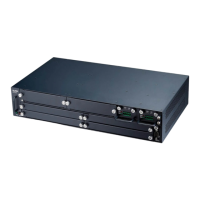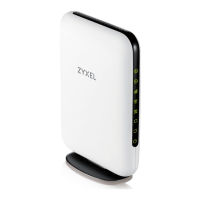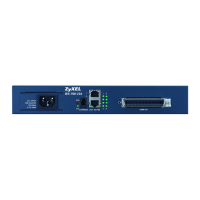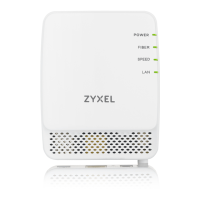Chapter 22 Policy Rule
OLT2406 User’s Guide
181
Two Rate Three Color Marker Traffic Policing
Traffic policing is the limiting of the input or output transmission rate of a class of traffic on the basis of
user-defined criteria. Traffic policing methods measure traffic flows against user-defined criteria and
identify it as either conforming, exceeding or violating the criteria.
Two Rate Three Color Marker (TRTCM, defined in RFC 2698) is a type of traffic policing that identifies
packets by comparing them to two user-defined rates: the Committed Information Rate (CIR) and the
Peak Information Rate (PIR). The CIR specifies the average rate at which packets are admitted to the
network. The PIR is greater than or equal to the CIR. CIR and PIR values are based on the guaranteed
and maximum bandwidth respectively as negotiated between a service provider and client.
Two Rate Three Color Marker evaluates incoming packets and marks them with one of three colors
which refer to packet loss priority levels. High packet loss priority level is referred to as red, medium is
referred to as yellow and low is referred to as green. After TRTCM is configured and DiffServ is enabled
the following actions are performed on the colored packets:
• Red (high loss priority level) packets are dropped.
• Yellow (medium loss priority level) packets are dropped if there is congestion on the network.
• Green (low loss priority level) packets are forwarded.
TRTCM operates in one of two modes: color-blind or color-aware. In color-blind mode, packets are
marked based on evaluating against the PIR and CIR regardless of if they have previously been marked
or not. In the color-aware mode, packets are marked based on both existing color and evaluation
against the PIR and CIR. If the packets do not match any of colors, then the packets proceed
unchanged.
22.1.2 What You Can Do
Use the Policy Rule screen (Section 22.2 on page 181) to enable the policy and display the active
classifier(s) you configure in the Classifier screen.
Use the Policy Counter screen (Section 22.3 on page 187) to display the dropped packets counters of
the selected policy(ies) and port(s).
22.2 Configuring Policy Rules
You must first configure a classifier in the Classifier screen. Refer to Section 21.2 on page 174 for more
information.
Click Advanced Applications > Policy Rule in the navigation panel to display the screen as shown.

